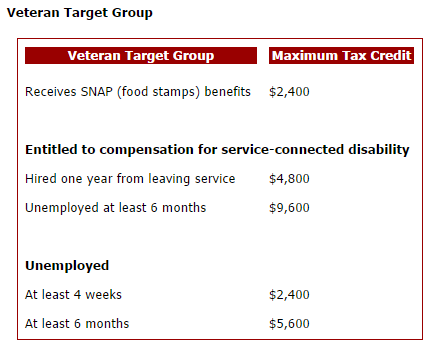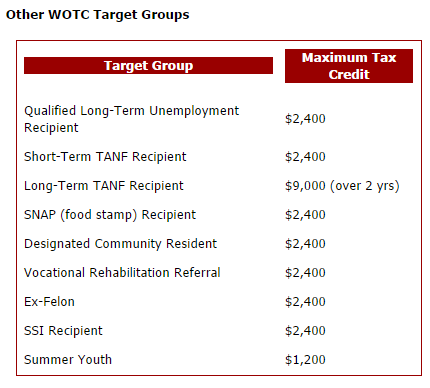Leveraging the Work Opportunity Tax Credit for your business

Written by Complete Payroll


The Work Opportunity Tax Credit (WOTC) is a tax credit the federal government provides to employers for hiring people who typically struggle to find employment. We're going to go over how WOTC works, the types of people employers can hire to become eligible for the credit, how the credits are calculated and how employers can apply for WOTC.
Who can I hire to become eligible?
To become eligible for the Work Opportunity Tax Credit, an employer would have to hire a qualifying member that meets at least one of the following criteria...
- Veteran
- Temporary Assistance for Needy Families (TANF) recipients
- Food stamp (SNAP) recipients
- Designated community residents (living in Empowerment Zones or Rural Renewal Counties)
- Vocational rehabilitation referrals
- Ex-felons
- Supplemental Security Income recipients
- Summer youth employees (living in Empowerment Zones)
For more details on each of the target groups, and how to determine if an employee is eligible, check out this page from the United States Department of Labor.
How does the Work Opportunity Tax Credit work?
The tax credit an employer receives depends on the target group of the individual hired, how much they make during their first year of employment and how many hours they worked.
TANF recipients
For TANF recipients, the credit is available to employers who hire members of this group for up to a two-year period.
- In the first year, the employer may claim a tax credit equal to 40% of the first-year wages, up to the maximum tax credit, if the individual works at least 400 hours.
- In the second year, the employer may claim a tax credit equal to 50% of the second-year wages, up to the maximum tax credit, if the individual works at least 400 hours.
All other target groups
For all other target groups, the credit is available to employers who hire members of these groups, based on the individual's hours worked and wages earned in the first year.
- If the individual works at least 120 hours, the employer may claim a tax credit equal to 25% of the individual's first year wages, up to the maximum tax credit.
- If the individual works at least 400 hours, the employer may claim a tax credit equal to 40% of the individual's first year wages, up to the maximum tax credit.
Calculating the employer tax credit
Employers can earn a tax credit equal to 25% or 40% of a new employee's first-year wages, up to the maximum for the target group (each target group has its own maximum tax credit). Employers will earn 25% if the employee works at least 120 hours and 40% if the employee works at least 400 hours.
Also, we have a free WOTC calculator, which will help you calculate your tax credit for each employee. You can download it by clicking here or on the image button below.
Maximum tax credit amounts
To make your life easier, we pulled the numbers stragitht from the Department of Labor. For your reference, you can find that page right here.
Here are the maximums for hiring veterans...

And here are the maximums for hiring any of the other target groups...

How to apply for the Work Opportunity Tax Credit
Apply for WOTC is actually relatively simple. There are four steps to follow...
- By the day the job offer is made, complete page 1 of IRS Form 8850.
- After the individual is hired, complete page 2 of the same form.
- If the employee has been conditionally certified as belonging to a WOTC target group by a state workforce agency, Vocational Rehabilitation Agency or another participating agency - complete ETA Form 9061 or ETA Form 9062.
- Submit the completed and signed forms to your state workforce agency within 28 days of the employee's start date.
Here's a pretty cool video that explains the process as well...



















